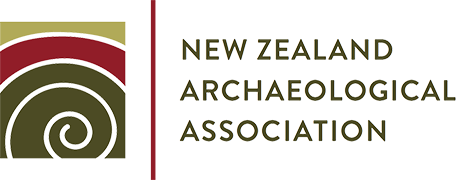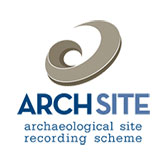This year’s conference in Taupō was our first since 2019 and, with nearly 180 attendees, was our biggest ever. We were supported throughout the conference by Ngāti Tūwharetoa, from the opening on Sunday morning, through to the field trip and the closing on Wednesday afternoon. Attendees came from all over the country, and it was fantastic to see such a large contingent of students there, no doubt attracted by the relatively low cost of attending. Particular thanks are due to Heritage New Zealand Pouhere Taonga for sponsoring student tickets to the field trip and dinner. It was also great to see so many students taking advantage of the student lunch, which presented an opportunity to learn more about different careers in archaeology in New Zealand. Papers were presented on a large range of topics and the number of paper offers meant that we had to have parallel papers sessions for the first time (excluding the jointly hosted Auckland conference). It was also great to see papers presented by specialists from other disciplines, and it is to be hoped that this is a trend that will continue. There was also a handful of posters. Details of the prize-winning papers and posters can be found here.
The field trip was held on Tuesday, in somewhat cold, dismal conditions. It began with a pōwhiri at the Otukou Marae, which was followed by some much appreciated hot soup. From here, we travelled to Te Pōrere, site of the last major battle of the New Zealand Wars (and recorded as archaeological sites T19/55, T19/56 and T19/57; the site is also listed by HNZPT). Here, and at the next stop (Opotaka), our iwi guides generously shared their knowledge of and passion for these places, and their deep connection with these places, bringing the history and archaeology to life. By now running behind time, as on any good conference field trip, we lunched on the buses (kudos to the conference organisers for a plastic-free lunch), on our way to the Kakaho rock art (T17/23). Our visit to this site was generously facilitated by the Te Kohera Kakaho Trust (Ngāti Te Kohera are the manawhenua for this area) and the landowners, Keith and Kim Lane. This was a wonderful opportunity to see some pretty special rock art at Te Umukurī-a-Ha, including petroglyph tiki faces. Another special moment was Gerard O’Regan’s karakia reverberating off the rock faces before we proceeded to the site, with the low-hanging clouds providing additional atmosphere.
There were functions most evenings, with a welcome event kindly hosted by the Taupō Museum and supported by the museum volunteers. On the following evening, Gerard O’Regan entertained a full house of archaeologists and members of the public with an engaging lecture on Māori rock art. Conference concluded with a gala dinner. In addition to the papers and prizes, two awards were made. The first of these was the Award for Outstanding Contribution to Archaeology, which Rod Wallace received for his work on charcoal analysis. The second was the Roger C. Green Lifetime Achievement Award, awarded to Kevin Jones in recognition of his work in aerial photography, site management and for ICOMOS.
NZAA would like to thank all those who contributed to the organisation of conference: Cathy Barr, Rachel Darmody, Eleanor Sturrock, Dylan Tahau and Ngāti Tūwharetoa, Te Maari Gardiner and Otukou Marae, Gerard O’Regan, Perry Fletcher, Alex Jorgensen, Aimee Foster, Sarah Mossop and the team at the Suncourt Hotel and Conference Centre, Taupō Museum, Prue Campbell (Yum Food Company) and Waipawa Buses.
- Garry Law presenting on the challenges of climate change for archaeology. Image: P. Petchey.
- Harry Allen presenting on the fascinating history of the use of Māori portraits in advertising in New Zealand. Image: P. Petchey.
- Hallie Buckley outlining the results of work on the Southern Cemeteries Project. Image: P. Petchey.
- Gerard O’Regan presenting a public talk on rock art to a full house. Image: P. Petchey.
- The Upper Pā/Redout at Te Pōrere. Image: J. Garland.
- It’s not archaeology if there isn’t some kind of obstacle. Image: M. van Os.
- Gerard O’Regan explaining some of the rock at Kakaho. Image: C. Twemlow
- Kakaho. Image: J. Coster.
- Kevin Jones, recipient of the Roger C. Green Lifetime Achievement Award. Image: P. Petchey.
- Rod Wallace with his award for outstanding contribution to archaeology. Image: H. Allen.
- Sheelagh Conran talking to students at the student lunch. Image: D. Trilford.





